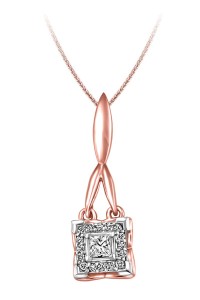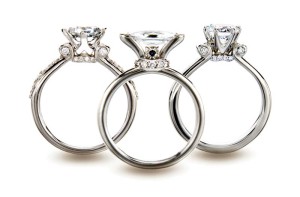Sensitivity issues

The appeal of Canadian diamonds among consumers is strong, given their conflict-free status, Dix says.
“People are seeking something with greater depth,” he explains. “It’s no longer the diamond that is important. It’s now how it’s sourced and brought to market. People want to know where something comes from and to rely on a generic diamond label is not going to be the future of diamonds.
“‘Mined, cut, and polished in Canada’ resonates with North American consumers. It builds depth to the story.”
Still, the premium most Canadian diamonds carry is a factor consumers must weigh, Even-Zohar says. “I think if someone has a choice between a Canadian brand and generic, they will go for the Canadian, but if the Canadian is much more expensive, they’ll go for the generic.”
Botha disagrees. “Diamantaires will always find the cheapest place to cut their diamonds, and I don’t know if that’s necessarily the right thing. What we’ve found in North America and the United States in particular, is that consumers are becoming very conscience about where the diamond was produced and we’ve made inroads into the United States because of that. It’s a North American product made in North America, and people don’t mind they’re paying a higher price for diamonds.”

He believes a large-scale local diamond-cutting industry is not far-fetched, given the lack of new diamond discoveries around the world in contrast to some of the Canadian diamond projects and mines currently in development and nearing production. He points to Shore Gold’s Star Diamond project near Prince Albert, Sask., as one example. With diamonds similar in nitrogen content to those found in Letseng, Lesotho—which is known to produce big diamonds—Star Diamond is poised to become a major player.
“This is going to create a lot of focus on Canada as the major source of diamonds in the world,” he says, adding preparations should be made now to capitalize on the diamond rush. The other factor to consider is that the gap between what it costs to cut in India—where 90 per cent of the world’s diamonds are manufactured—compared to Canada is closing slightly.
“With India’s economy growing like it is, it just follows naturally that wages will increase,” Botha says. “As equalization takes place in salaries in other cutting centres, you’re going to find a return to the North American market in all industries, not just the diamond industry.”
Dix is equally optimistic, although he stresses that setting up a cutting facility is extremely expensive. He estimates it takes about $7 million to bring $1 million worth of diamonds to market.
“You can create nodes of expertise in Canada that will enhance us, and in the future, maybe bring a greater diamond business here,” he adds. “There is a lot of potential here and with new mines and new opportunities, it will continue to grow.”





